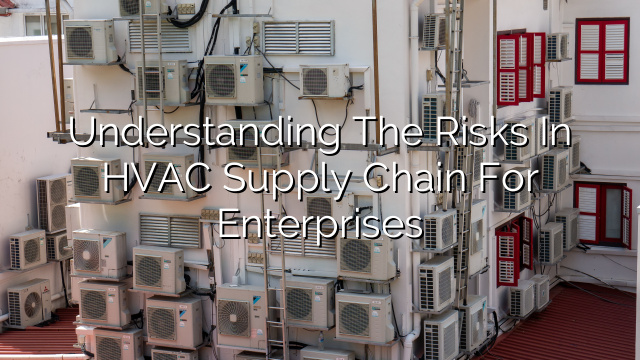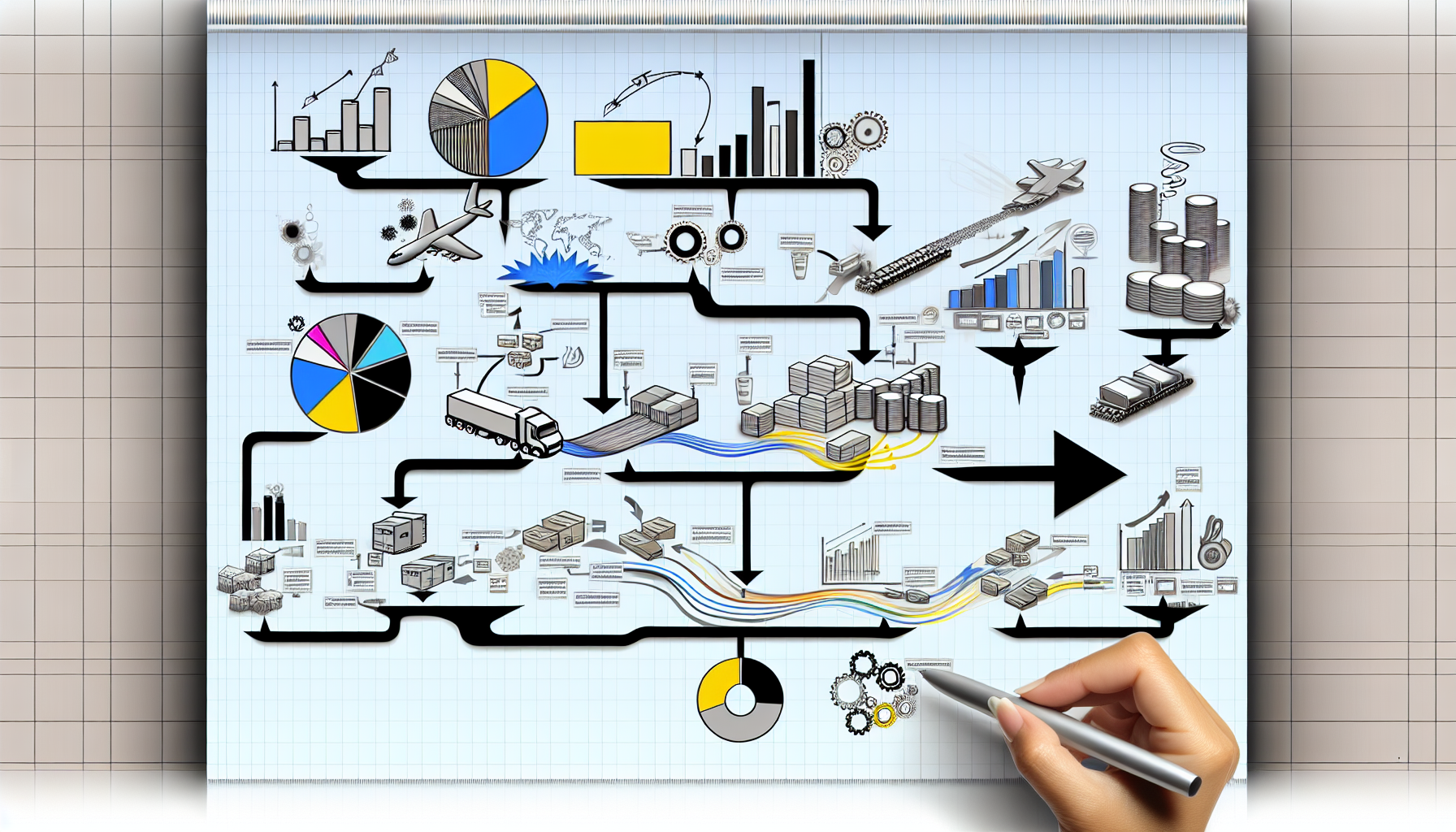Introduction
In today’s globalized world, enterprises rely heavily on supply chains to meet their operational needs. The HVAC (Heating, Ventilation, and Air Conditioning) industry is no exception. As businesses increasingly outsource their HVAC manufacturing and distribution, the risks associated with the supply chain have become an area of concern.
In this blog post, we will explore the key risks that enterprises face in the HVAC supply chain and discuss strategies to mitigate those risks.
1. Supply Chain Disruptions
One of the main risks in the HVAC supply chain is disruptions that can cause delays or shortages in the delivery of HVAC products. These disruptions can be caused by natural disasters, political instability, labor disputes, or supplier bankruptcy.
To mitigate this risk, enterprises should:
- Establish relationships with multiple suppliers to diversify their supply base.
- Regularly assess the financial health and stability of suppliers.
- Develop contingency plans and alternative sourcing strategies.
- Monitor global events and geopolitical risks to anticipate potential disruptions.
2. Quality Control Issues
Ensuring the quality of HVAC products is crucial for enterprises to maintain customer satisfaction and avoid costly rework or product recalls. In a complex supply chain, maintaining consistent quality standards can be a challenge.
To address this risk, enterprises should:
- Implement rigorous quality control measures throughout the supply chain, from raw material sourcing to manufacturing and distribution.
- Regularly audit suppliers to ensure compliance with quality standards.
- Provide clear specifications and expectations to suppliers, including documentation requirements and performance indicators.
- Establish a system for tracking and addressing customer complaints and product failures.
3. Intellectual Property Theft
Intellectual property theft, including the theft of patents, trade secrets, and proprietary designs, is a growing concern in the HVAC industry. Enterprises invest significant resources in research and development, and the loss of intellectual property can undermine their competitive advantage.
To mitigate this risk, enterprises should:
- Protect intellectual property through patents, trademarks, and copyrights.
- Establish strong contractual agreements with suppliers that include provisions for protecting intellectual property.
- Limit access to proprietary information to a need-to-know basis.
- Regularly monitor and audit supply chain partners for potential breaches.
4. Cybersecurity Threats
In today’s digital age, cybersecurity threats pose a significant risk to enterprises’ HVAC supply chains. A cybersecurity breach can result in the theft of sensitive information, disruption of operations, or compromise of customer data.
To address this risk, enterprises should:
- Implement robust cybersecurity measures, including firewalls, antivirus software, and secure data encryption.
- Train employees on cybersecurity best practices and the importance of data protection.
- Regularly update and patch software systems to address vulnerabilities.
- Conduct regular security audits and penetration testing to identify and address weaknesses.
5. Environmental and Regulatory Compliance
The HVAC industry is subject to a range of environmental and regulatory requirements, including energy efficiency standards, emissions controls, and refrigerant regulations. Non-compliance with these regulations can result in fines, legal liabilities, and reputational damage.
To mitigate this risk, enterprises should:
- Stay informed about evolving regulations and industry standards.
- Ensure that suppliers and manufacturers comply with applicable environmental and regulatory requirements.
- Establish clear expectations and requirements for environmental and regulatory compliance in contracts and agreements.
- Conduct regular audits to verify compliance and address any identified issues promptly.
Frequently Asked Questions (FAQ)
- What are the main risks in the HVAC supply chain for enterprises?
The main risks in the HVAC supply chain for enterprises include supply chain disruptions, quality control issues, intellectual property theft, cybersecurity threats, and environmental and regulatory compliance.
- How can enterprises mitigate the risk of supply chain disruptions?
Enterprises can mitigate the risk of supply chain disruptions by establishing relationships with multiple suppliers, regularly assessing supplier stability, developing contingency plans, and monitoring global events and geopolitical risks.
- What steps can enterprises take to ensure quality control in the HVAC supply chain?
Enterprises can ensure quality control in the HVAC supply chain by implementing rigorous quality control measures, regularly auditing suppliers, providing clear specifications to suppliers, and establishing a system for tracking customer complaints and product failures.
- How can enterprises protect their intellectual property in the HVAC supply chain?
Enterprises can protect their intellectual property in the HVAC supply chain by securing patents, trademarks, and copyrights, establishing strong contractual agreements, limiting access to proprietary information, and regularly monitoring supply chain partners for potential breaches.
- What measures should enterprises take to address cybersecurity threats in the HVAC supply chain?
To address cybersecurity threats in the HVAC supply chain, enterprises should implement robust cybersecurity measures, train employees on best practices, regularly update software systems, and conduct security audits and penetration testing.
- How can enterprises ensure environmental and regulatory compliance in the HVAC supply chain?
Enterprises can ensure environmental and regulatory compliance in the HVAC supply chain by staying informed about regulations and industry standards, verifying compliance of suppliers and manufacturers, including requirements in contracts, and conducting regular audits.






